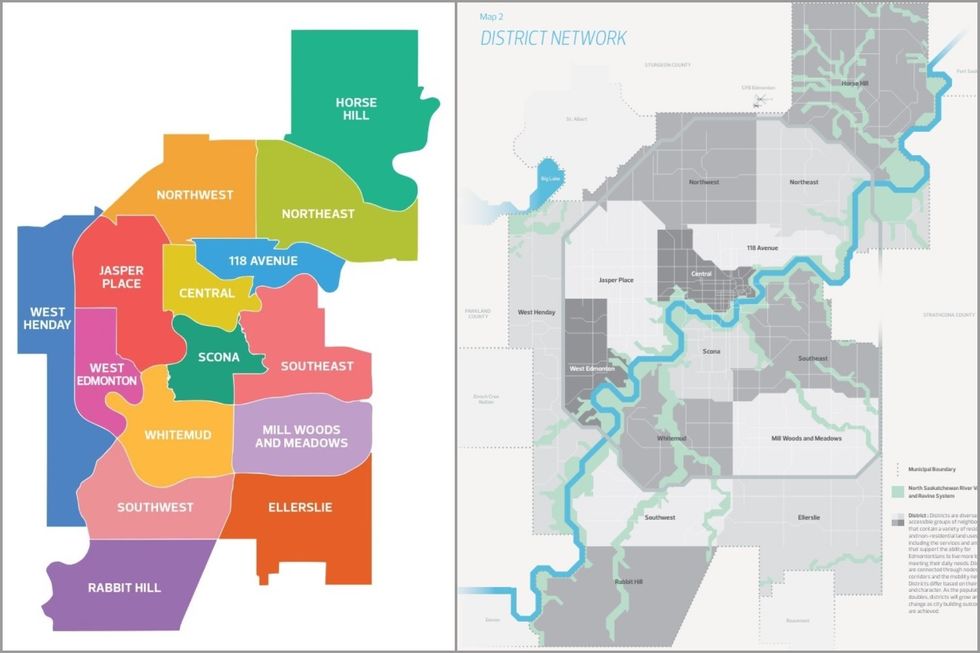On Tuesday, the City of Edmonton began public hearings for its proposed District Policy, in what is the next big policy move after the City overhauled its zoning policy last fall.
First introduced in the City Plan that was approved by Council on December 7, 2020, the District Policy would see Edmonton treated as a collection of 15 districts for planning purposes.
"The new Zoning Bylaw helps modernize Edmonton's planning system," City administration noted in a report. "District plans further simplify planning in Edmonton by providing land use, mobility, and growth management direction at a manageable and efficient scale. An efficient planning system helps reduce barriers to housing and businesses and encourages investment in the city — a key goal of both the City Plan and the Edmonton Economic Action Plan."
As detailed in the City Plan, all 15 districts include both residential and non-residential uses, and each of them are served by at least one mass transit node or corridor, with the goal of turning every one of the districts into a 15-minute community.

At the time the City Plan was adopted, there were more than 200 local area plans in effect. In June 2021, Council repealed 75 of those plans in order to remove plans that had fulfilled their purposes and to simplify land use planning. Through the ongoing District Policy work, staff are proposing to repeal an additional 57 plans, and the District Policy would "further align the planning system to The City Plan," administration says, reducing the amount of policies that have to be consulted when making decisions.
The District Policy provides a set of policies that apply across Edmonton while the 15 district plans provide information and direction specific to the districts. These policy documents would then guide development in the city, whether through the recommendations administration makes to Council regarding rezonings or the amendments of other statutory plans.
"District plans benefit a range of audiences in different ways," administration said. "For Edmontonians, developers, and investors, they will show how Edmonton will grow and change over time and where development will be encouraged. For administration and Council, it will provide a consolidated source of information and policies to help evaluate development proposals — such as rezonings, subdivisions, and development permits — and inform infrastructure investment and design decisions — such as for roadways, parks, and transit."
The City says the district plans will help faciliate Edmonton's growth towards housing a population of two million people.
"Edmonton is experiencing a high rate of population growth," administration added. "District plans ensure ample opportunity to accommodate growth to two million and beyond — primarily in nodes, corridors, and developing areas, and to a lesser extent in residential neighbourhoods in all parts of the city. Planning for growth in this way helps add vibrancy to the city, make the best use of existing infrastructure, and keep the City moving towards the City Plan's targets."
Those City Plan targets are:
- 600,000 additional residents in the redeveloping area;
- 50% of new units added through infill city-wide;
- 50% of trips made by transit and active modes;
- Residents can access daily needs within a 15 minute walk, roll or transit ride;
- Nodes and corridors support 50% of all employment in Edmonton; and
- Net per-person greenhouse gas emissions are zero.
The District Policy and District Plans will now be the subject of public hearings that are scheduled to run for three days. Following the public hearings, a first and second reading of the associated bylaw will be considered by Council, after which it would be referred to the Edmonton Metropolitan Region Board before returning to Council for third and final reading, which is expected to occur this fall.





















